How to Make Memorable B2B Content – Video Summary
For the full article scroll below.
B2B marketers know that when communicating with customers, it’s important that written copy makes a lasting impact. This article covers some ways you can adjust your B2B marketing content to ensure it appeals to your audience and sticks in their memory.
Content
One of the main elements of content that needs to be memorable is the substance.
The simple truth is that there’s no getting past starting with smart ideas.
When you begin with appealing concepts, and substantial statements, that’s when you create opportunities to truly stick with your customers, long after they were exposed to your message..
But an uncompromising attitude towards good content is only the beginning. According to research on human psychology, there are three main factors (Koch 2010, Pearson 2019) that influence the encoding of memories:
1. Attention
The very first part of presenting information to a customer is grabbing their attention, and keeping it long enough, for them to understand it. While perception normally feels instantaneous, it’s actually a process, and can occasionally be duped. This is something we all experience any time we have the feeling of seeing something out of the corner of our eye, only to discover there was nothing there.
Here are several ways content can grab viewer’s attention:
Motion or implied motion
We’re literally unable to pull our gaze away from movement.
Movement captures our attention because we’re biologically programmed to look out for movement as a self-defense mechanism. In times long past motion could signal a physical danger, which would demand our attention in order to evade it. While this type of situation is no longer necessary in most of our lives, our brains are still evolutionarily hardwired to be drawn to movement.
The ultimate use of motion to draw attention lies in use of video content. In fact, recent statistics show that video content is widely shared and at least as viewed as image content, if not more so, on a variety of social media platforms. The use of videos is rapidly increasing and including videos in your marketing campaigns is absolutely a good move. Here are a few fascinating statistics about video content from 2019:
- 81% of businesses used videos in their marketing, which was a 63% increase from the previous year.
- 59% of executives prefer watching video content to reading text.
- 54% of consumers are demanding more video content.
- Users spend 88% more time on websites that have videos.
On a personal note, I hardly ever bother reading how-to texts anymore – it feels like for anything I ever want to learn to do, someone’s already put up a tutorial on YouTube..p.
For individuals keen on producing their own video content, a video editor is an essential resource that can enable them to enhance their videos with a diverse range of effects and transitions. Not only can video editors augment the quality of the video, but some also provide advanced features such as pre-recording webcam test tools, subtitle generation, and language translation.
Even without video content, however, the use of simple animation (think GIFs), or even images with implied movement, help draw people’s attention to your content.
Try using pictures of objects or people in motion, or those using lines and designs that allude to movement. Examples can be seen in logo designs like these:

Human faces
As social creatures, we are drawn to other humans and we like to look at faces. Even babies spend more time looking at pictures of faces then they do other images (Fantz 1963). This should be no surprise, since facial expressions give us an immense amount of information about what other people are thinking and feeling; it’s widely accepted in psychology that some basic emotions can be read via facial expressions even across cultures.
Our fascination with faces is such that we often imagine seeing them in everyday objects, our predisposition to pareidolia is regularly manipulated by savvy product designers, and largely responsible for the long-lasting appeal of such icons as the VW beetle. Pareidolia is so well known to the automobile manufacturers that they’re taking advantage of this human predisposition for looking at faces to market their cars to specific consumer groups – Using data collected about what kinds of emotional expressions people prefer their cars to have, manufacturers now create designs that appeal to particular demographics. This extends into the b2b market as well – it’s not by chance that military vehicles appear menacing, while he heavy duty trucks appear rugged and dependable.
Even if you can’t make your product look like a human face, having people or human expressions in your advertisements can draw attention to your copy.
High-contrast environments
High contrast is another great way to draw attention. Studies have shown high contrast visual stimuli draw the human gaze and are more difficult for people to ignore. Contrast through visual stimuli can be done in many ways, including contrast of dark and light colors, differing sizes of text, different fonts, alternating textures, or differences in spacing.
To give an example using text color, two colors with the highest level of contrast are black and white. Black text over a white background is the easiest color combination of writing for us to read, which is one of the reasons that this is a widespread standard of both physical and online writing. Take a look at the following three boxes of text, which one are you drawn to first?

The first box may draw your attention as the black and orange contrast quite well. The second box is likely difficult to focus on since the two blues are very similar colors and the writing won’t stand out clearly. Most likely, the third box is the easiest to read and quickly draws your attention because of the stark contrast between the text and the background. It is definitely worth investigating various ways of leveraging contrast to draw as many eyes as possible to your content.
2.Novelty
Psychologists have also found that people are more likely to encode experiences into their memories when they are taking in new information. If an idea or image in your copy is creative and unexpected, the content is more likely to be remembered and will be more difficult to forget.
There are many ways to be novel in advertising, but the key to effect is surprising your audience. Below are some common ways this is done.
Error
Creating errors intentionally is a great way to draw people to your advertisement. People will spend more time looking at an image examining the elements that seem wrong.
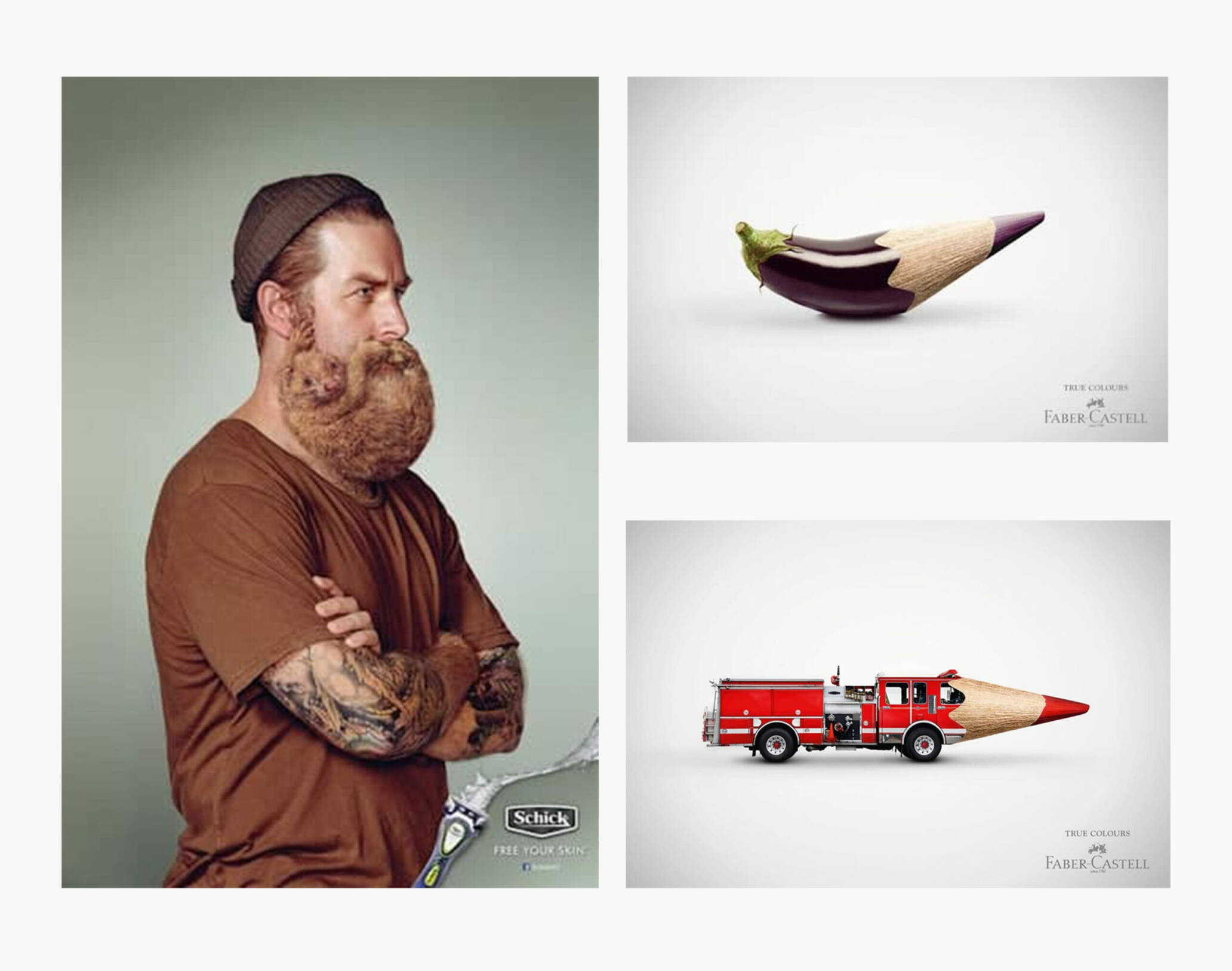
“Free your skin, 2” by Y&R, originally aired June 2014 (left).
Faber-Castell Campaign by Serviceplan, originally aired December 2010 (right).
Juxtaposition
This involves placing objects in an unexpected location or context. Items that are out of place can cause viewers to take a second look.
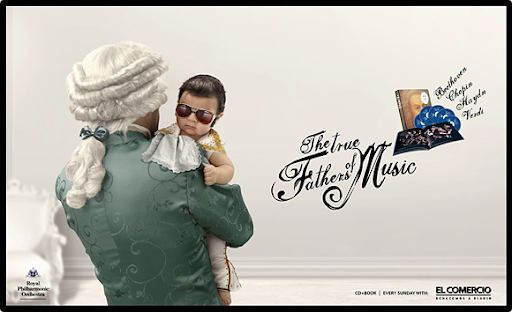
“Elvis” by El Comercio, originally aired June 2011.
Polysemy
Polysemy is the use of ambiguity in advertising, where a single image could have multiple meanings or interpretations.
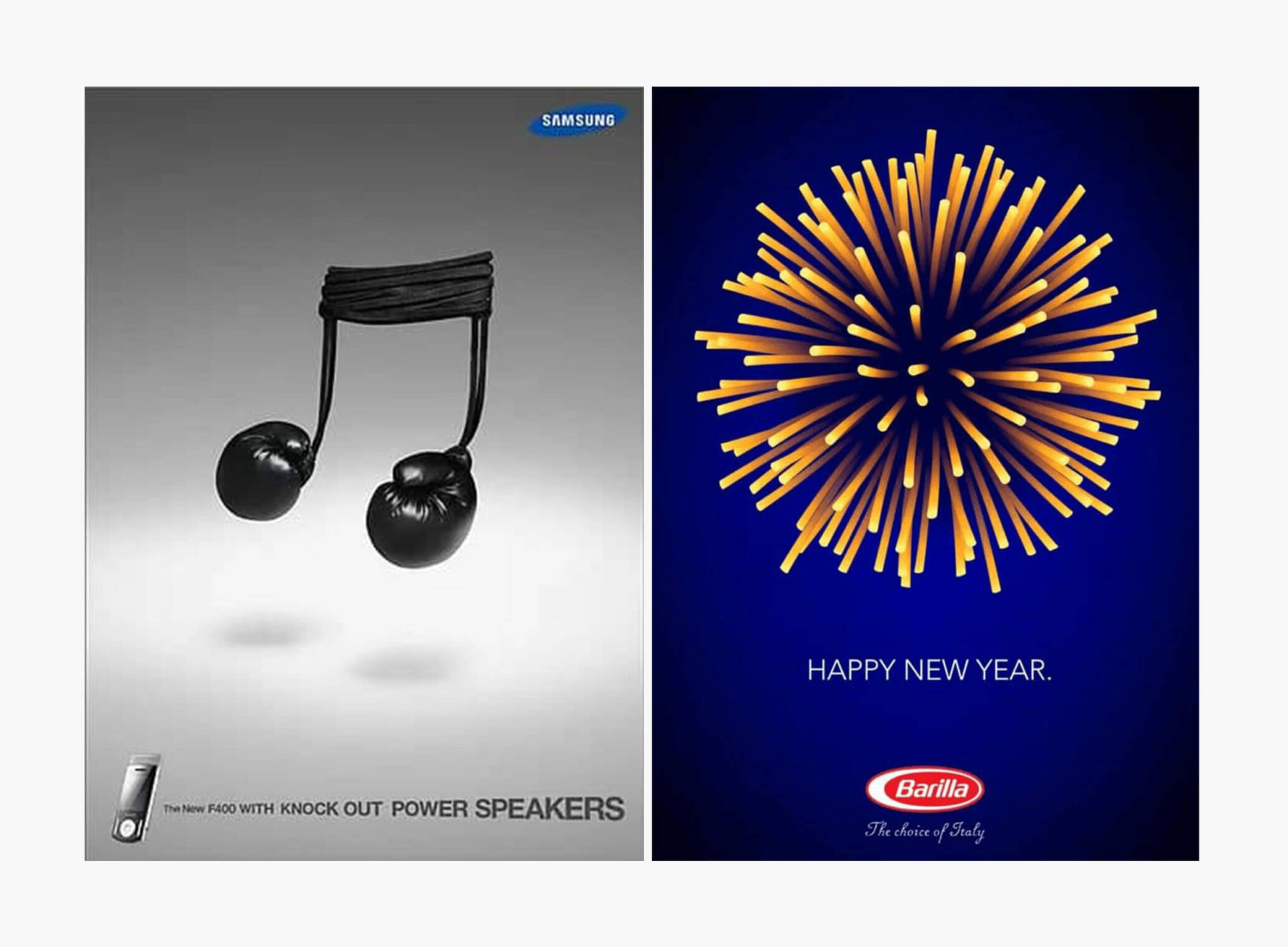
“Power” by Cheil, originally aired September 2009 (left).
“Happy new year” by Y&R, originally aired December 2010 (right).
3. Emotional Impact
One type of content that strongly correlates with encoding long-term memories is emotional impact. In 2018 the British Broadcasting Company (BBC) did a study specifically testing how emotion links to memory in branding. Here are some powerful statistics from their study:
- 70% of long-term memory encoding peaks are connected to moments of emotional intensity.
- Any strong emotion can effectively influence memory. The intensity of the emotion is more important than the kind of emotion experienced.
- There is a window where long-term memory is encoded directly after an experience of intense emotion, so the best time to show your brand in an advertisement is directly after the moment that creates emotion.
One fantastic example of emotion used in marketing is the 2014 Thai Life Insurance video advertisement, “Unsung Hero”. This video touched people’s hearts so deeply that it went viral and reached a massive audience globally, not just in Thailand, making the company famous on an international scale.
Emotional advertisements don’t have to be lengthy, however. A simple image can be enough to convey powerful emotions, such as the fear-inducing ads put out regularly by the World Wildlife Foundation (WWF):
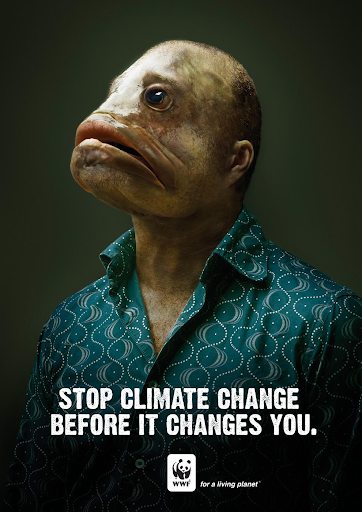
“Fish” by Germaine, originally aired January 2008.
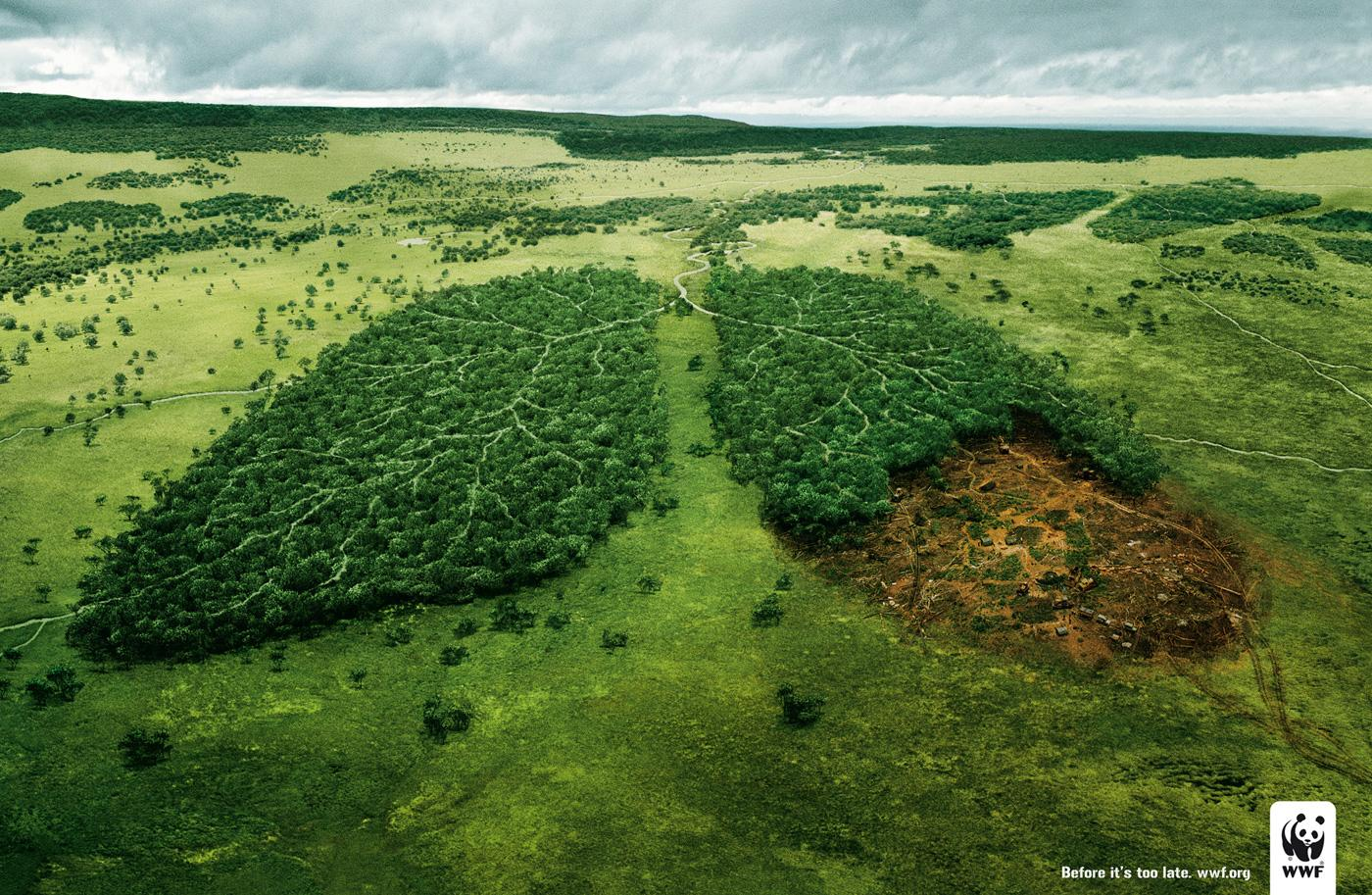
“Lungs” by TBWA, France, originally aired April 2008.
Advertisements like these, which simply employ a powerful image and few words, can be extremely versatile since they don’t rely on language to make their point. They can therefore easily reach a diverse, global audience.
Further Reading on Memorable Advertising
An amazing resource that expands upon the previously mentioned element of memorability is the book “Made to Stick: Why Some Ideas Survive and Others Die” by Chip and Dan Heath. They write extensively about six traits of memorable ideas:
1. Simple
Complex ideas are more difficult for people to hold in their minds, so keeping content simple allows consumers to process and understand it easily.
2. Unexpected
As mentioned earlier, novel concepts tend to grab our attention quicker and stay in our memories longer.
3. Concrete
This is the concept that abstract ideas are harder to hold onto than those that people can immediately observe or feel.
4. Credible
If an idea doesn’t sound viable, it will immediately be dismissed by those receiving the information.
5. Emotional
As we discussed earlier in the article, emotions connect strongly with how our minds hold onto information.
6. Story-based
People are drawn to stories. This is very closely tied to our receptiveness of emotionally conveyed advertisements. Stories, especially stories about people your audience can relate to or see themselves in, can help viewers to connect more viscerally with your content.
If you’re interested in increasing your knowledge about creating memorable content, we would definitely recommend that you check out this book!


